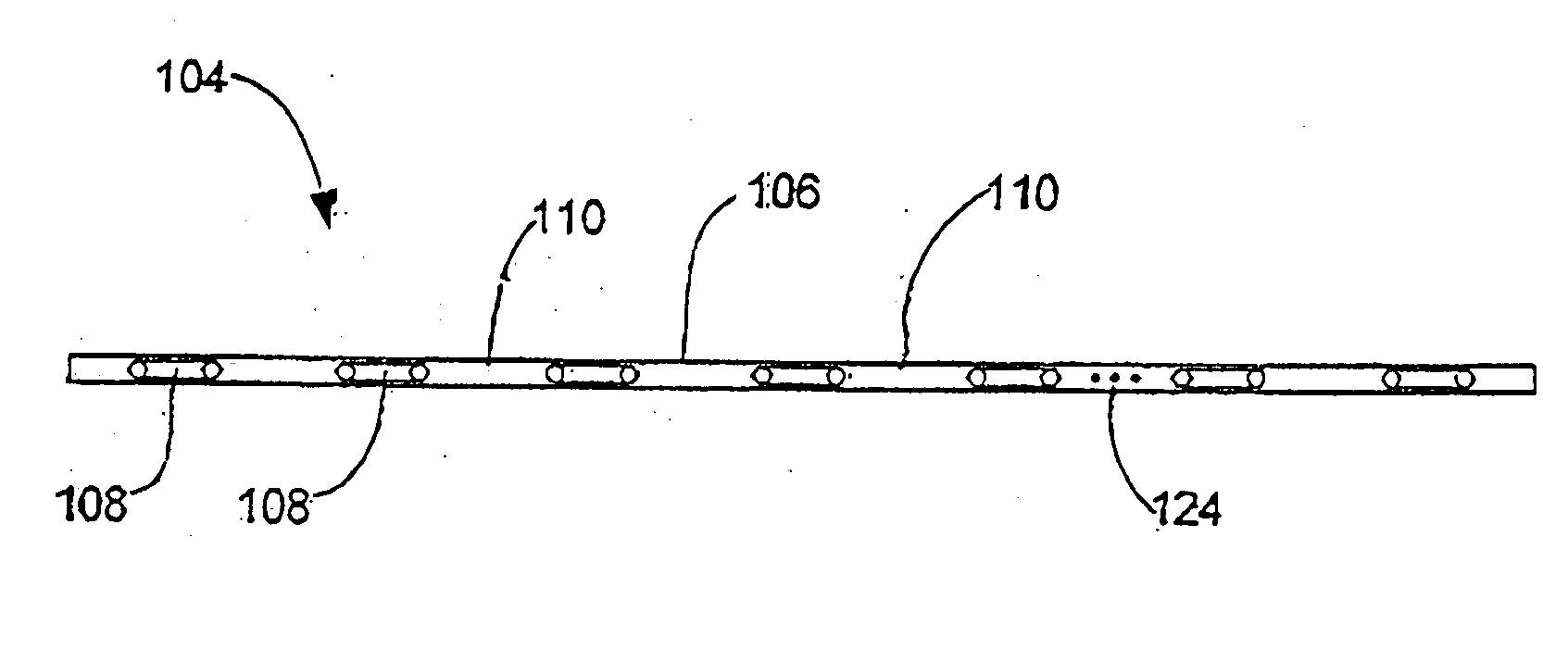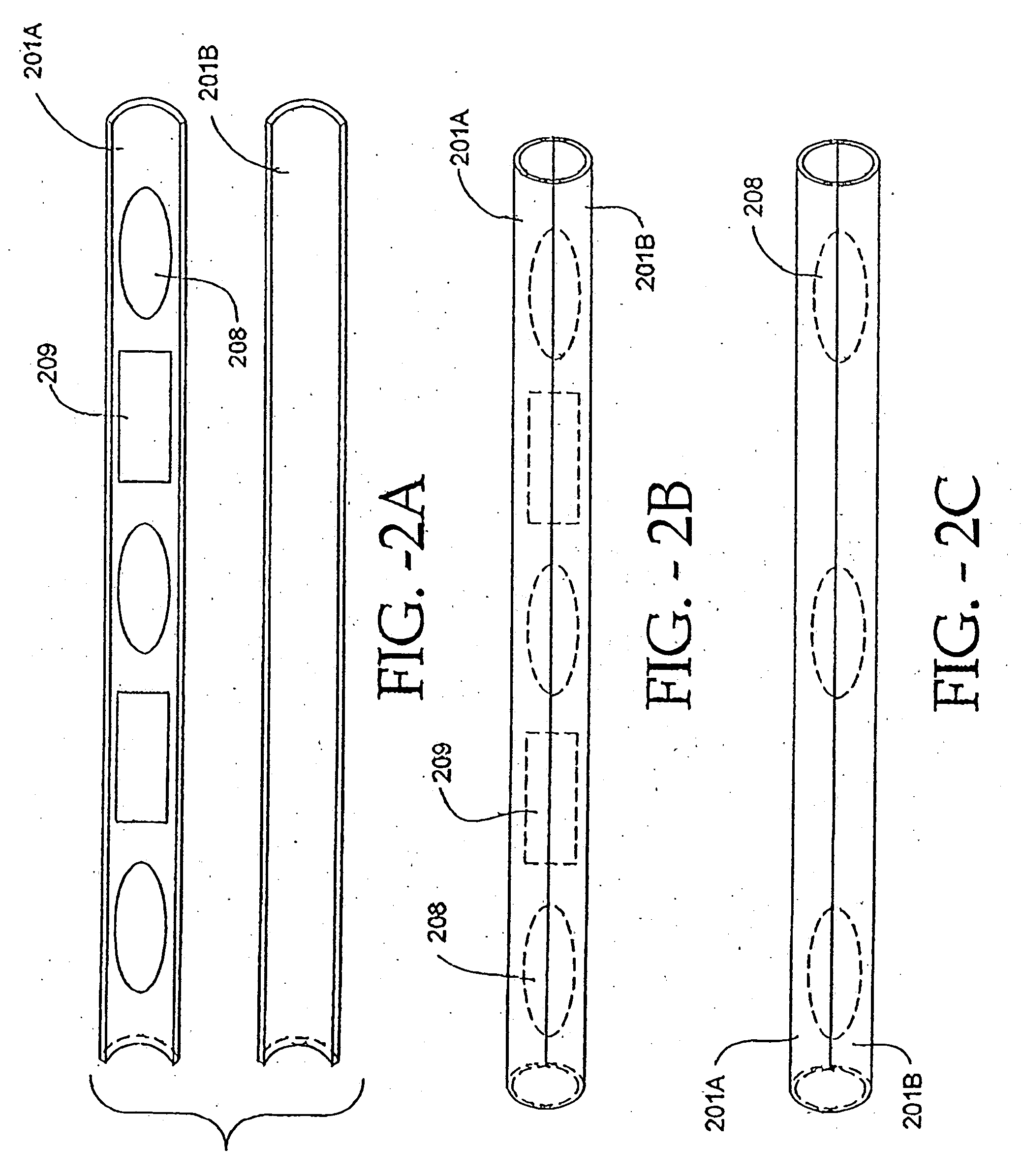Delivery system and method for interstitial radiation therapy using seed strands constructed with preformed strand housing
a technology of interstitial radiation therapy and pre-formed strands, which is applied in the directions of radiation therapy, nuclear engineering, coatings, etc., can solve the problems of seed deposited in a track, difficult manipulation, and the suture of the braided suture does not assist in the placement of seeds
- Summary
- Abstract
- Description
- Claims
- Application Information
AI Technical Summary
Benefits of technology
Problems solved by technology
Method used
Image
Examples
Embodiment Construction
. 1A THROUGH 1C REPRESENT A DELIVERY SYSTEM AND METHOD FOR INTERSTITIAL RADIATION THERAPY
[0098] In FIG. 1A, the therapeutic elongated element or member or matrix or strand 104 is displayed having the semi-rigid, radially flexible polymer 106 and the radioactive seeds 108. As can be seen in FIG. 1A, the polymer fills the spacing segments 110 in a contiguous manner to fashion the total elongate member.
[0099] FIG. 1C shows a side view of the brachytherapy device 112. The needle 114 is shown partially broken away and has a sheath component 116, and is loaded with the therapeutic element or member 104. The beveled end 118 of the needle 114 is plugged with a bio-compatible substance 120. The plug prevents fluids and tissue from entering the needle and coming in contact with the member 104 prior to the placement of the member or strand 104 adjacent the tumor. The plug 120 can be made out of a bone wax or can be made of one of the bio-absorbable polymers or copolymers listed herein. Further...
PUM
| Property | Measurement | Unit |
|---|---|---|
| Temperature | aaaaa | aaaaa |
| Temperature | aaaaa | aaaaa |
| Temperature | aaaaa | aaaaa |
Abstract
Description
Claims
Application Information
 Login to View More
Login to View More - R&D
- Intellectual Property
- Life Sciences
- Materials
- Tech Scout
- Unparalleled Data Quality
- Higher Quality Content
- 60% Fewer Hallucinations
Browse by: Latest US Patents, China's latest patents, Technical Efficacy Thesaurus, Application Domain, Technology Topic, Popular Technical Reports.
© 2025 PatSnap. All rights reserved.Legal|Privacy policy|Modern Slavery Act Transparency Statement|Sitemap|About US| Contact US: help@patsnap.com



